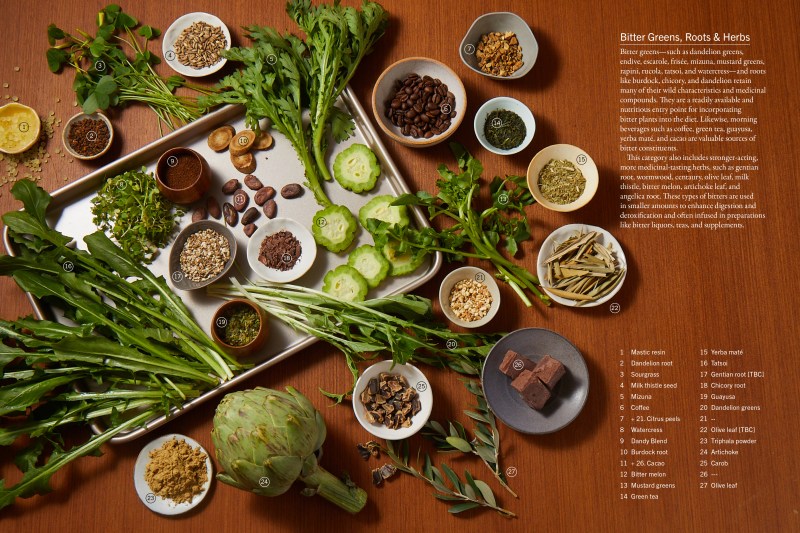
If you’re one of the 40% in the United States who suffer from inflammation, you’re probably fed up with the body pain, chronic fatigue, and insomnia that is associated with the condition. Some just live with it. Others try Western Medicine. Some come across traditional medicine as a last resort. And while different people find different results with each of these options, many come to realize that a natural approach was the very thing they were missing.
No one knows this better than Clinical Herbalist William Siff, who gave me an exciting sneak peek into his new book, The Plant Medicine Protocol. As the founder and formulator of Goldthread Tonics, Siff is one of the most sought-after clinical herbalists in the world. His research has been groundbreaking for minimizing inflammation, boosting energy, building immunity, and improving digestion.
If you do suffer from chronic inflammation, you should always consult with your healthcare professional before making any changes. But for many, the results of introducing medicinal plants into daily food can be immediate and cumulative, and it could be life-changing for many who struggle with the crippling effects of inflammation.

What is inflammation?
Inflammation in the body is a part of the healing process. When you get injured or infected with some kind of bacteria, inflammatory cells travel to the spot to help your immune system fight them off. Unfortunately, sometimes inflammation can stay long after the danger is gone. This is called chronic inflammation. If you have inflammation, you may experience redness, swollen joints that are warm to the touch, joint pain, and stiffness. Read on to learn how to reduce inflammation using Siff’s 5-step plan.

Siff’s 5-step plant protocol
Five steps are at the heart of his new book, taking wisdom from Traditional Chinese Medicine and Ayurveda. This method isn’t necessarily about cutting things out of your diet, although eating healthy, getting exercise, staying hydrated, and sleeping well will increase the effectiveness of this treatment. Instead, it’s about adding things and increasing your exposure to plants that produce phytochemicals, which are what give plants their vibrant colors, flavors, and aromas. Medicinal plants contain a higher concentration of these because they are closer to their wild origins. The more of these compounds that you consume on a regular basis, the better your health will be.
Step one: Culinary
The first step in Siff’s plan is to introduce herbs, spices, and bitters into your diet. You may be familiar with many of these already because these foods are the building blocks of many cuisines. Here are a couple of the many herbs, spices, and bitters that Siff recommends in The Plant Medicine Protocol.
- Black Pepper
- Bitter Melon
- Ginger
- Chives
- Turmeric
Step two: Nutritives
The Western Diet often neglects nutritives, which are chock-full of essential vitamins, minerals, trace elements, and antioxidants. They play a huge role in our physiological health, and that’s why adding them to your diet is the next step. Siff notes that these foods are often packaged as “superfoods,” even though cultures across the globe see them as commonplace as potatoes. Be sure to check out the full list in The Plant Medicine Protocol.
- Acai berries
- Alfalfa leaf
- Jujube dates
- Nori
- Sea vegetables
Step three: Demulcents
Demulcents are known for their soothing, cooling, and moisturizing properties. These plants are full of water that can prevent all kinds of GI tract issues, such as leaky gut. Siff writes that the easiest way to add demulcents into your diet is to rehydrate with them in your water first thing in the morning. Here are a few to try:
- Slice of fresh Aloe Vera
- Chia Seeds
- Licorice Root
- Manuka Honey
- Olive Oil
Step four: Nervines
Next, Siff recommends that you begin adding nervines into your day. These medicinal plants are perfect for those hectic moments when you feel pulled in every direction or can’t sleep. Typically, they are taken through herbal teas like chamomile or peppermint. Other times, it’s a couple of drops of your favorite essential oil in a diffuser. When inhaled, nervines help you produce neurotransmitters that help you relax or shift your state of consciousness. The first category of nervines that Siff shares are fragrant relaxants, followed by nervine calmatives. In the list below, I’ll share just a few essential oils. Be sure to check out The Plant Medicine Protocol for the others.
- Frankincense
- Lavender
- Sandalwood
- Rose
- Jasmine
Step five: Adaptogens
Last but certainly not least, introducing adaptogens will give you the extra boost you need to adapt to prolonged stress and restore your physiological balance. These are the real “superfoods” that often come with fantastic legends in ancient cultures. These medicinals will strengthen your immune system, reduce inflammation and cortisol levels, increase sleep quality, and boost fertility, among other things. Here’s a couple to consider adding to your daily routine:
- Alma Berries
- Holy Basil
- Goji berries
- Korean Ginseng
- Astragalus Root
Consistency is more important than perfection
Every day comes a new opportunity for you to show up for yourself and pursue healing through your food. To help with that, Siff has added a whole bunch of delicious drink recipes in The Plant Medicine Protocol, such as a Sparkling Rosemary Limeade or the Blue Poppy-Seed Sleep Elixir. Siff writes that consistency is more important than perfection when it comes to following his protocol. His method is very customizable, so you can go as fast or slow as you want to.
As soon as you begin, you might find what thousands have already discovered—results are immediate and cumulative. If you want to banish inflammation, low energy, poor immunity, and bad digestion for good, you can learn all about William Siff and his methods in his new book, The Plant Medicine Protocol, which will hit the bookshelves in October.




